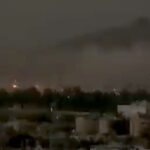More and more reports about North Korean dictator Kim Jong-Un’s deteriorating health are surfacing. U.S intelligence and recently South Korean and Japanese press have suggested that Kim Jong-Un (KJU) is in critical condition after a failed emergency heart surgery in mid-April. China, North Korea’s main ally, has reportedly sent a medical team led by a senior member of the Chinese Communist Party’s International Liaison Department to check on KJU’s health.
Standing at 5-foot-7 and weighing roughly 300 pounds, KJU is considered “severely obese.” He was last seen on April 11, when he presided over a party meeting and has reportedly visited a military airbase north of Pyongyang the next day.
Bearing in mind that KJU disappeared from public life before, the rumors of his death should be taken with a grain of salt. In 2014 he was not seen for nearly six weeks, reportedly due to cyst removal surgery, before reappearing with a cane.
What makes things different this time is that KJU missed the country’s most important holiday on April 15, the birthday of North Korea’s founder, Kim Il-Sen.
ALIVE AND WELL IN WONSAN?
The South Korean Presidential Palace has been quick to dismiss the reports, claiming that KJU is “alive and well” and that he has been residing at his seacoast villa in Wonsan since April 13.
Satellite imagery pulled by 38thNorth confirms that KJU’s train is indeed at the Leadership Railway Station in Wonsan, but it only arrived between April 15 and 21.
The South Korean statements and the geospatial intelligence are consistent with other reports that the North Korean dictator has been out of the country’s capital Pyongyang for the past weeks. However, they do not clarify KJU’s health status or his whereabouts.
NO CLEAR SUCCESSION PLAN
In the event of KJU’s death, the North Koreans would likely delay the official announcement until an heir to the throne is chosen.
The lack of a clear successor is the main critical uncertainty that would result from KJU’s death. This question is particularly worrisome, as the succession will determine who is in control of North Korea’s nuclear capabilities, the arsenal of ballistic missiles, and other WMD programs. That person would also inherit one of the most repressive totalitarian regimes and a starving population caught in the middle of a pandemic.

Photo of Kim Yo-Jong’s via Reuters
It is unknown whether KJU named a successor in the event of his demise, but the options considered in intelligence circles are the following:
- His sister, Kim Yo-Jong.
- A general or a military junta with or without the support of the Korean Workers Party.
- A regency between Kim Yo-Jong and senior military heads backed by the Korean Workers Party.
Any succession would be temporary until one of KJU’s two children will be old enough to take power. The continuation of the Kim dynasty (or Paektu bloodline) is critical for the survival of the regime in Pyongyang.
MILITARY READINESS AT HISTORICAL HIGH
The United States, South Korean, and Japan fear that the death of KJU could cause the collapse of the regime and result in a vacuum of power with multiple factions fighting for power. North of the 38th parallel, the North Korean military, and the Korean Workers Party fear that any vacuum, even if temporary, would embolden their enemies to pray on the leaderless and mourning nation.
The signs of anxiety on Pyongyang’s part are clear. The North Korean military readiness remains at a historical high, with the air force and artillery units showing an unusual increase in operations.
- Russia Bombs Maternity Ward & Children’s Hospital in Mariupol As Part of Siege - 10 March 2022
- T-Intell’s OSINT Training Marks One Year Anniversary - 18 November 2021
- IS-K Never Left the Battlefield - 27 August 2021






